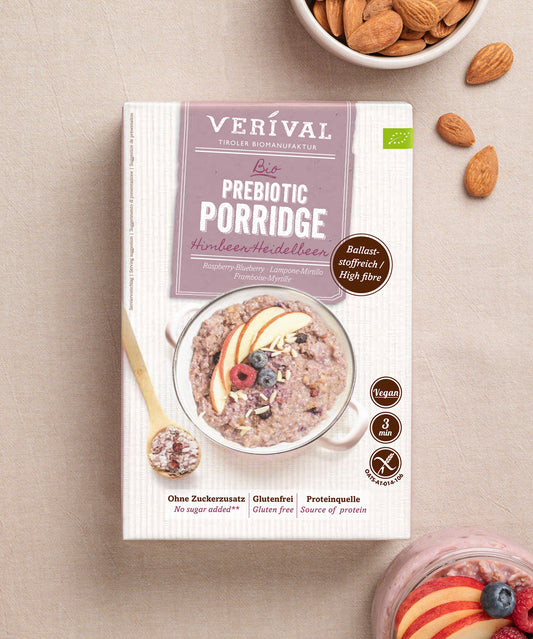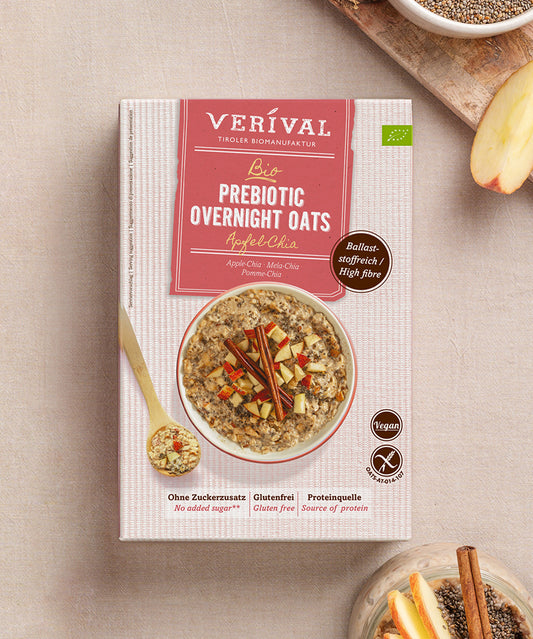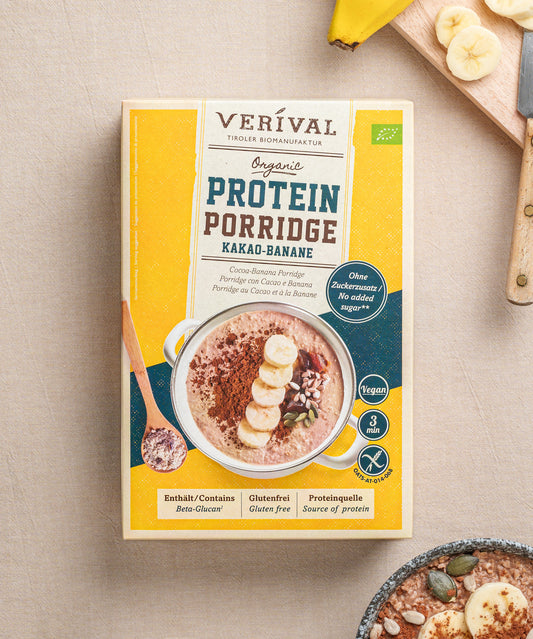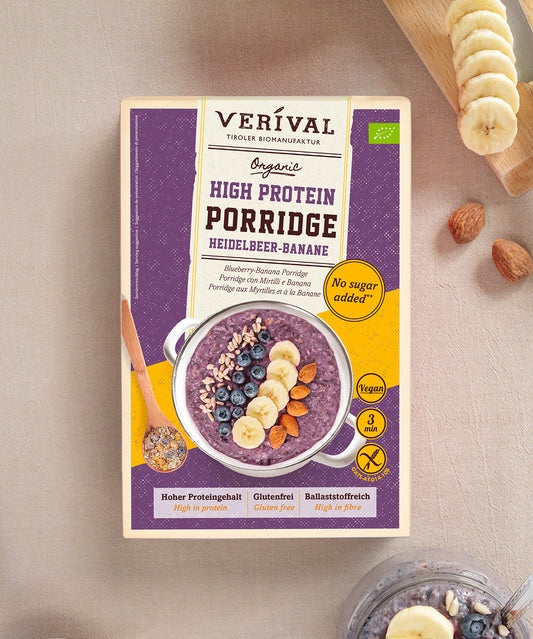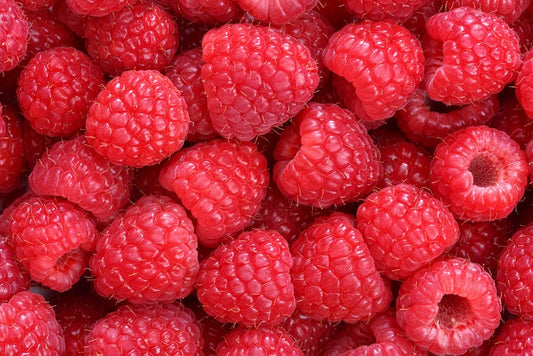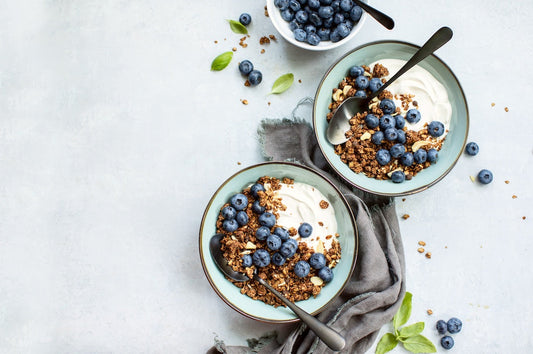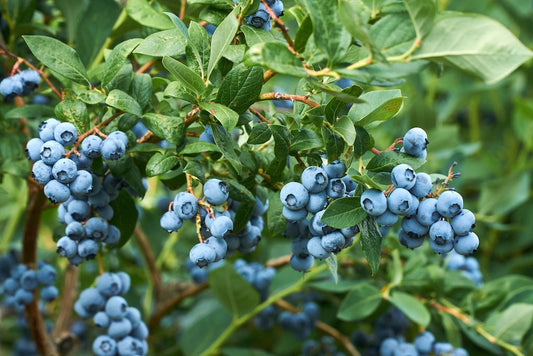Whether as a diet to lose a few kilos or as a long-term nutritional concept, low carb is already on everyone's lips. However, the approach requires that you take a close look at your diet to avoid health consequences. Thus, the low-carb lifestyle is probably not suitable for everyone.
The healthy middle way is to reduce your carbohydrate intake throughout the day. So you start the day with a healthy breakfast of complex carbohydrates and fibre, and reduce the carbohydrates with each subsequent meal. Finally, your evening meal should contain hardly any carbohydrates at all.
Healthy breakfast from VERIVAL
Before you start your low-carb diet, there are a few things you should know:
What is low carb?
Low carb is a nutritional concept in which the carbohydrate content of your daily diet is reduced.
While in a balanced diet about 50% of energy is absorbed from carbohydrates, in a low-carb diet this is usually between 10 and 40%. Instead of carbohydrates, fat is preferred as an energy source.
Low carb is often used as a form of diet to lose unwanted fat. However, some see cutting down on carbohydrates as a long-term diet.
The most radical low-carb concepts include, for example, the Atkins diet or the ketogenic diet. These involve eating only 20-60 g of carbohydrates daily. With a daily calorie requirement of 2000 kcal, this is a carbohydrate share of 4-12%.
Why avoid carbohydrates?
A low-carb diet helps to keep blood sugar levels constant. So if you cut out carbohydrates and instead eat a high-protein, high-fat diet, you stay full longer. What's more, a low-carb diet is less likely to trigger food cravings.
It is also assumed that the body forms fewer fat reserves when the carbohydrate intake is reduced. Because if the carbohydrate store is full, the body stores the excess energy in the form of fat.
The same applies the other way around: if the body needs energy but the carbohydrate stores are empty due to a low-carbohydrate diet, the body draws on its fat reserves.
As a dietary concept, low carb sounds promising.
Do we need carbohydrates?
Carbohydrates are, in short, sugar molecules that are considered important building blocks for our cells. Most of the energy from carbohydrates is used for vital bodily functions. These include breathing and heartbeat. Most of the energy is used for brain activity.
Nevertheless, we could theoretically live without carbohydrates. Unlike protein and fat, carbohydrates are not essential. This means that they are the only macronutrient that the body can produce itself from protein. This means that carbohydrates do not have to be ingested through food like fat and protein.
Is low carb dangerous?
A radical reduction in carbohydrates also has its disadvantages:
Carbohydrates as an important source of fibre
Carbohydrates contain important dietary fibres and vitamins that our body needs to stay healthy. So, completely avoiding carbohydrates in the long term is not a good idea.
Instead, it is recommended to cover about 40-50% of your daily energy needs with carbohydrates. Choose complex carbohydrates to ensure you get enough fibre and vitamins.
Some good choices are, for example, oats, wholegrain products, porridge or low-sugar muesli. Legumes should also be on your menu, as they also contain a lot of fibre and micronutrients such as vitamins.
Low carb means high fat
In a balanced diet, carbohydrates serve as the body's main source of energy. This means that drastically reducing them in a low-carb diet can quickly make you feel without energy, especially at the beginning of the change in diet.
This is where fat comes into play. To prevent a drop in energy levels, you should increase your fat intake to 50-60% in a low-carb diet. This is because fat is, after carbohydrates, the second largest source of energy for our body. By way of comparison, the recommended fat intake for a balanced diet is 30%.
However, caution is advised with increased fat intake. If you frequently consume animal fats, it can have a negative impact on your health in the long term. Your blood lipid level rises, and at the same time so does the risk of cardiovascular diseases such as heart attack and stroke.
So if you opt for a low-carb diet, you should make sure to choose healthy fats. These can be found, for example, in flaxseeds, nuts, chia seeds, avocado or olive oil. On the other hand, you should avoid butter, sausage and cold cuts, or palm oil.
It can make sense to reduce the carbohydrate content in your diet if you want to lose a few pounds.
It is important to replace the lower carbohydrate content with complex carbohydrates. Only then will you benefit from the advantages of a low-carb diet.
A popular variant of a low-carb diet, for example, is to omit carbohydrates in the evening. This way, your body can get energy from food during the day and draw on its fat reserves at night.
So start the day full of energy and fuel your body with healthy carbohydrates that keep you full for longer. As the day progresses, reduce your carbohydrate intake and cut out carbohydrates altogether in the evening.
Are you still looking for a low-carb breakfast? Then try our Lower Carb Sport Muesli with raspberries, almonds and coconut. With 60% less carbohydrates than comparable oat-based breakfast products, it is therefore ideally suited for a low-carb diet.
This way you can easily achieve a carbohydrate content of less than 50% without having to go without the energy provided by carbohydrates.
Which carbohydrates are allowed on a low-carb diet?
The following table shows you which carbohydrates you can eat in moderation on a low-carb diet and which you should eliminate from your diet. Many of the recommended carbohydrate sources also contain healthy fats and protein. This means you are well equipped for your low-carb diet.
| Allowed Carbohydrates | Occasionally allowed carbohydrates | Not allowed carbohydrates |
| Oatmeal | Potato | White Bread |
| Millet | Sweet potato | Pasta |
| Buckwheat | Wholemeal bread | Cake |
| Nuts , seeds | Bulgur, Couscous | Candy |
| Berries (raspberries, blueberries), grapefruit | Bananas, apples, grapes | Fruit yoghurt |
| Leaf lettuce, spinach | Oranges, mango, pineapple | Grape sugar |
| Tomatoes, cucumbers, zucchini, eggplant, broccoli | Dried fruits , dates | Snack biscuits (chips, crackers) |
| Cabbage vegetables | Carrots | Long grain rice |
| Milk, plant-based milk alternatives | Alcohol | |
| Cottage cheese, plant-based yogurt alternatives | ||
| Feta, goat cheese, mozzarella |





